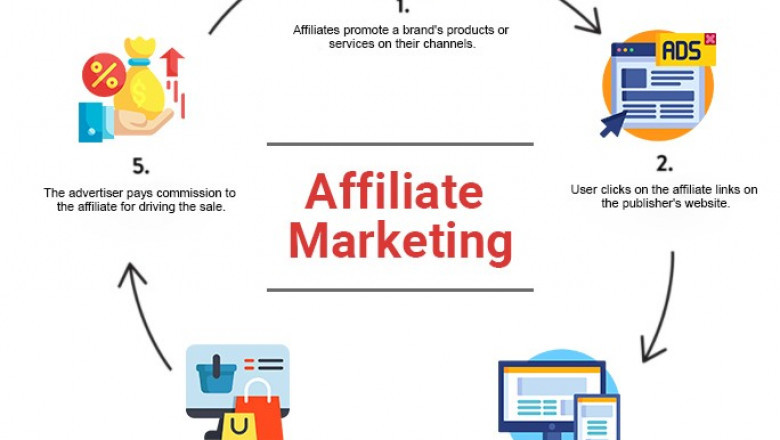views

Affiliate marketing can enhance 15-20% of sales, but have you ever thought about how catastrophic affiliate traps can be?
Affiliate marketing is an advertising model in which a company compensates third-party publishers to generate traffic or leads to the company's products and services. The third-party publishers are affiliates, and the commission fee incentivizes them to find ways to promote the company.
Affiliates promote the advertiser's business by advertising their products & services on different platforms. For every converted sale, affiliates earn a commission from the advertisers.
However, the affiliates have to follow specific norms for associating with advertisers. But do all affiliates abide by the terms & conditions? The answer to this is No!
What Are Affiliate Traps?
Affiliate traps are illegitimate techniques used by fraudsters to deceive advertisers and steal their marketing revenue.
Several fraudsters use traps to manipulate the advertisers, steal their existing customers, and still earn an affiliate commission for the same. Such acts are affiliate traps! The foremost affiliate marketing rule is introducing new buyers/customers to the advertiser and not returning to the existing audience.
These traps are the source of earning money for the fraudsters but adversely affect the brand image of the advertisers. The advertisers lose their marketing budget as they pay commission to the fraudulent affiliates.
The Problem: Why Do Affiliates Practice Affiliate Traps?
The sole intention of affiliate marketing is to generate revenue by attracting new and legitimate user traffic for advertisers. They use various mediums like websites, social media platforms, web browser extensions, software applications, and more to increase the user base of the advertisers.
The fraudulent affiliates use illegitimate methods to fake the user traffic to the advertiser's website and earn a commission for each sale. Affiliates adopt many ways to monetize the sales like cookie stuffing, typo-squatting, misleading deals, and the list is never-ending.
A few of the purposes for cyberattacks to get into inappropriate means of earning commission are listed below:
· Stealing the advertiser's revenue
· Diverting the real users
· Redirecting users to a competitor site
· Collect the data of buyers and sell it for retargeting or other commercial purposes
· Impacting customer experience through customer journey hijacking
· Hampering brand reputation
The Methodology: How Does Affiliate Traps Work?
The advertisers assign a unique affiliate ID, publisher ID, campaign ID, and other specifics to every affiliate to track the source of the action. Every time a customer purchases, the advertiser tracks the transaction and pays a commission to the affiliates.
A legit way for affiliate marketing is to own an online asset (website or application), have significant traffic, promote the products & services of the advertiser, and earn the commission. However, the fraudulent affiliates use inappropriate ways to inject their affiliate cookies, intending to monetize the sales happening on the advertiser's website.
These tactics are beneficial for frauds, but what about the advertisers?
The Impact: How do Affiliate Traps affect Advertisers:
Affiliate traps can have several adverse effects on a brand. Some of the expected consequences are listed below.
• Brand Image:
The affiliates use intrusive marketing methods like injecting adware, pop-up ads, spam emails, and pushing inappropriate content, expired coupons, and more to promote, impacting the brand's image.
• Customers Experience:
A study estimated that over 37% of customers change their mindset about the brand because of the poor experience they had while shopping. The techniques used by affiliates often become a hassle for the end-users and affect their brand experience.
• Advertising Revenue:
Advertisers end up paying the fraudulent affiliates and lose their marketing budget that could have been of use to attract legitimate user traffic. Recent studies have estimated that brands lose approximately $7.9B every day to affiliate frauds.
The Solution:
If you want to prevent customer journey hijacking and protect your brand reputation, connect with our team of experts to know about our Brand Compliance Monitoring Tools and Affiliate Management Services. The specialized engineers at Virus Positive technologies have identified over 20 types of affiliate traps. We offer personalized solutions to the affiliate's networks and brands as per their requirements. Please write to us today at sales@viruspositive.com to safeguard your brand reputation and recover the lost revenues.












